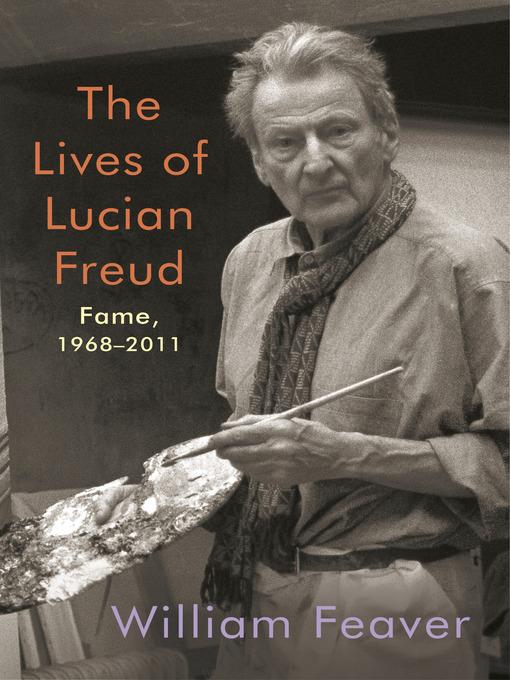
The Lives of Lucian Freud
Fame: 1968-2011
کتاب های مرتبط
- اطلاعات
- نقد و بررسی
- دیدگاه کاربران
نقد و بررسی

Starred review from August 12, 2019
Art, debauchery, nightlife, and lowlifes fill out this rollicking biography of the celebrated British painter. Art critic and curator Feaver (Frank Auerbach) follows Lucian Freud (1922–2011), grandson of psychologist Sigmund Freud, through his rise to the top of Britain’s art scene, where his realist portraits thrummed with tension and suspicion, perhaps because of the marathon sittings his models endured or the pitiless depictions of flesh in his paintings. Feaver has much to say about the art— “Here are individual fingernails and individual hairs, some with split ends,” he writes of the landmark Girl with Roses, “as fully realized as the golden tresses of a Dürer”—but more about Freud’s daily picaresque: the relentless womanizing (he fathered 12 illegitimate children), the studied eccentricities (he carpeted his studio with broken glass), the gambling addiction that saddled him with debts to gangsters, and the swirl of colorful acquaintances, from nobility to famous artists to petty criminals, all of whom he painted. Feaver heavily quotes from his interviews with Freud, and the artist’s chatty, insouciant voice—“I said, ‘I’m going to pay you when I’ve got the money and if you kill me you won’t get the money,’ an argument that impressed them”—suffuses the book. The result is a riotously entertaining narrative that immerses readers in Freud’s beguiling sensibility. Photos.

June 1, 2020
Distinguished British art critic Feaver follows up 2019's The Lives of Lucian Freud: The Restless Years, 1922-1968 with a study of the artist at the height of his powers and his fame, drawing on nearly four decades of conversations with Freud as well as the artist's letters and papers. Anticipating a major retrospective being organized for the centenary of Freud's birth in 2022.
Copyright 2020 Library Journal, LLC Used with permission.

October 15, 2020
The second installment in the noted critic's intimate portrait of the idiosyncratic artist. Feaver picks up his biography of Lucian Freud (1922-2011) where the award-winning first volume ended, in 1968. The author became a trusted friend of Freud's in 1973 when his work wasn't well known, and this gossipy, drawn-out biography of these "extraordinarily productive" years is greatly guided by Freud's own words, "thousands of phone calls from him over more than thirty-five years," and reminiscences from those who knew him. Primarily a portraitist, "realistic without being real," as his "old friend and idol" Francis Bacon described them, Freud painted people he "felt like painting"--and those who could pay. As one sitter said, the "results are not flattering." Feaver writes that Freud loved to gamble, and the "companionship of horses was more of an attraction than most human company." Close to his mother, Freud did numerous paintings of Lucie, "arguably the longest time ever spent by any mother's painter son on any painter son's mother." Fond of painting nudes, he told Feaver that when "I paint clothes I'm really painting naked people who are covered in clothes," the "portraits are all personal and the nudes especially demand it." Freud also fathered numerous illegitimate children. A "common grievance or understanding among Freud's children was that he only saw them--and of them only the ones he recognized--when it suited him and sporadically at that." In 2001, his reputation secure, he was able to get Queen Elizabeth II to sit for a small portrait. The Sun's headline screamed: "travesty." Feaver provides a full-throated chronicle of Freud's life: discussions of more than 200 works; shows, dealers, and collectors; painting techniques; the artist's many models, including his daughters, "there for what he could make of them;" frequent moves from one residence to another; love life, friends, and ongoing financial problems. Also, two of his favorite authors were Balzac and Raymond Chandler. A knowledgeable yet overlong, extremely detailed biography that may overwhelm readers.
COPYRIGHT(2020) Kirkus Reviews, ALL RIGHTS RESERVED.

December 1, 2020
Lucian Freud declared that the purpose of his art was to "astonish, disturb, seduce, and convince,"" traits also abundant in art critic Feaver's gleaming second and final biographical volume, following The Lives of Lucian Freud: The Restless Years, 1922-1968 (2019). The sequel, picking up the story in 1968, uncovers and reveals more than four decades of Freud's life, from his personal entanglements and inner struggles to his artistic output. Freud was dispassionate about still lives and landscapes, preferring instead nude portraiture, which, according to him, evoked a more intimate immediacy and autobiographical tone. His subjects ranged from his mother and children to lovers and associates and even random people from his jaunts who struck his fancy. He also painted celebrities, such as Queen Elizabeth, Jerry Hall, and Kate Moss. He rarely painted anyone outside his sphere except once when he painted a woman who wrote him a fan letter. While hailed as a major British artist today, Freud's reputation rose and fell during his lifetime. At times securing fewer exhibitions than his frenemy, Francis Bacon, Freud was intermittently better known for his frequently scandalous life than for his work. An extremely complicated man, artist, and icon, Freud requires a holistic portrayal, which Feaver, who knew the artist well, powerfully achieves.
COPYRIGHT(2020) Booklist, ALL RIGHTS RESERVED.

























دیدگاه کاربران